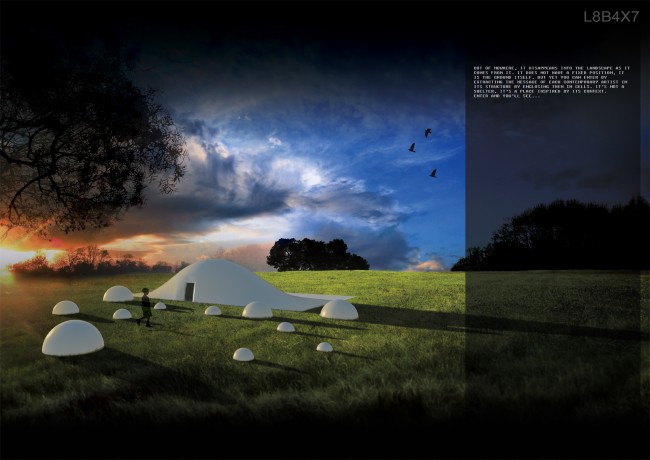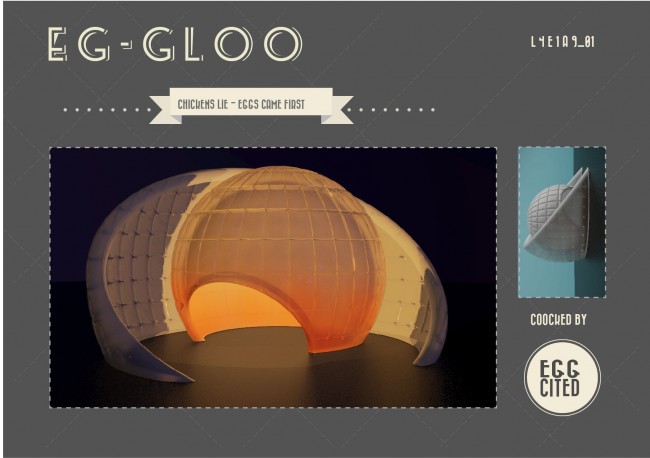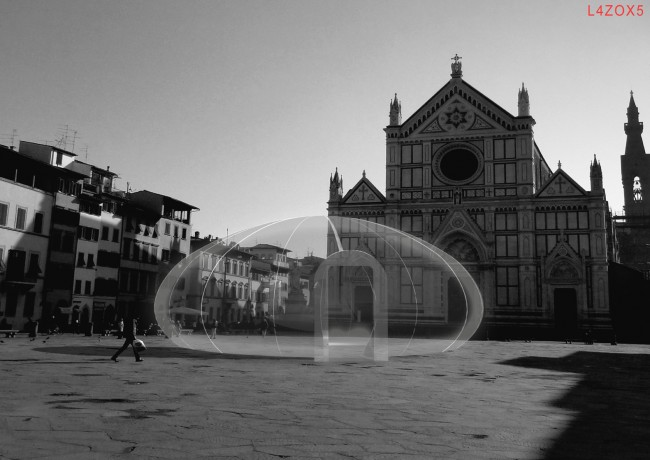Info:
Title: THE BALLOON - Code: L4ZOX5Contest: PFFF / 2012
By: E. Cacciamani, M. Pisacane
Views: 2698 Likes: 2
Votes:
ITALO ROTA0 BENJAMIN BALL1 MARCO CANEVACCI6 VANESSA TODARO6 ANDREA BARTOLI14.2
THE BALLOON
THE BALLOON
Our idea has taken inspiration from both the nomadic tent, the symbol of portability and reversibility, and from the common balloon, so-loved by children, as regards the more empathetic aspects. So let the dreams, ideas and works of the artists who will be showing in this itinerant pavilion fly! Our project aims at an integration with the environment and becoming one with it, so we have preferred a transparent covering to others less translucent or coloured, to reinforce the concept of a barely visible filter between the world and the Farm Cultural Camp. We have taken inspiration from nomadic life where the sky was the roof over man and he was strongly tied to the environment. The layout, an irregular ellipse (about 9.00 x 7.00 meters) that deliberately resembles the familiar outline of a balloon, has a single entrance that is 0.90m in width and 1.80m in height which is ideal for minimizing the loss of air pressure that is maintained however by an engine that continuously filters the air and provides ventilation. The shape of the structure is basically flattened with the external perimeter accentuated (to use the available space in this 50sqm pavilion to its fullest) and to effectively ward off the downward pressure of the wind. The pavilion can reach a maximum height of 3.20 meters .We have adopted a polyester/PVC fabric because technically it is the most widely used in inflatable architecture, as well as offering a good relationship between cost, performance and duration (an average of 15-20 years). It is highly resistant, and it has a good elasticity and fire-resistance (Class M2 Legislation NFP 92-503 and Class B1 to DIN 4102). It is easy to clean thanks to the low-wicking polyester fibres used that provide protection against soiling. For the past few years, the two components that make up this multi-material can be separated and reused for the production of less noble items by means of a closed cycle that minimizes environmental impact. The joints will be welded at high frequency; we opted for this method because it renders the structure waterproof and it offers the possibility to perform specific checkups while in the works. This particular type of welding provides a chemical connection between the covering of the materials used thus making them more durable than sewn seams. It will be anchored to the ground outside by means of 4 circular section concrete blocks (providing a greater transportability) each having a diameter of 60cm and a height of 30cm, and by taut hemp ropes wrapped symmetrically around the structure protecting it from the wind. We chose hemp because in addition to being sustainable, it has a great mechanical strength, it absorbs 95% of UV rays, and it has a good degree of absorbency that should not be underestimated during heavy rainfall. In order to ensure greater stability to the structure, we have created a seating arrangement that follows the perimeter of the pavilion, (interrupted at regular intervals to allow the user to place lighting fixtures, etc.), made of plastic filled with sand, paper, textile waste, and recycled material.
And now…..…Let it fly!








